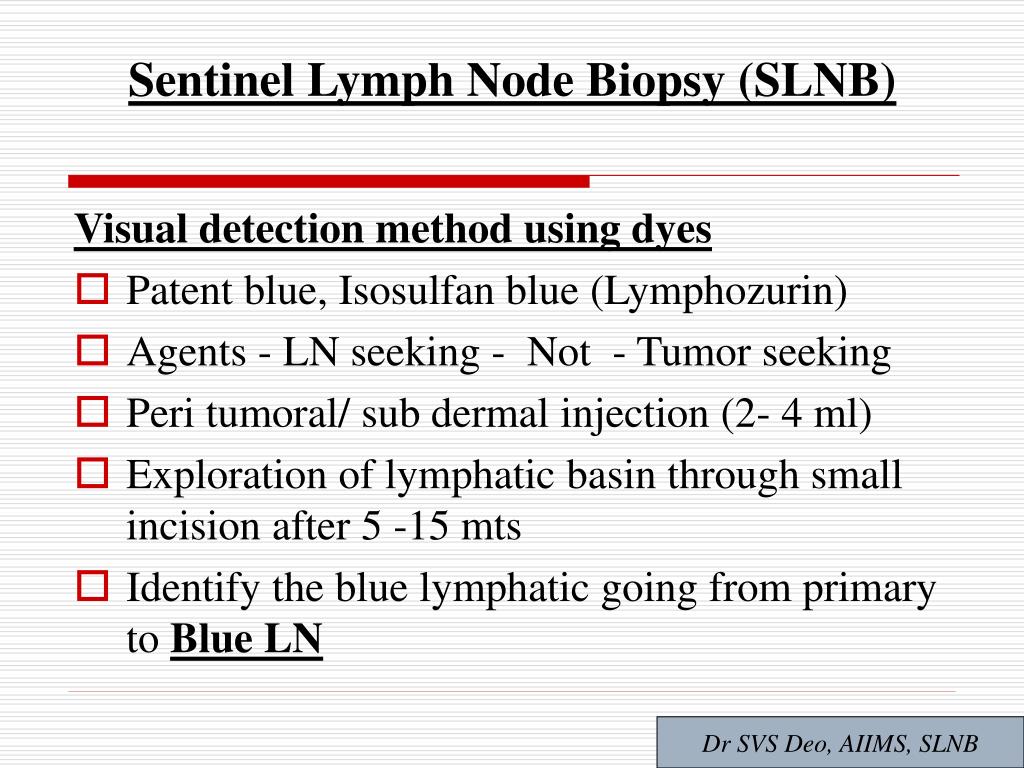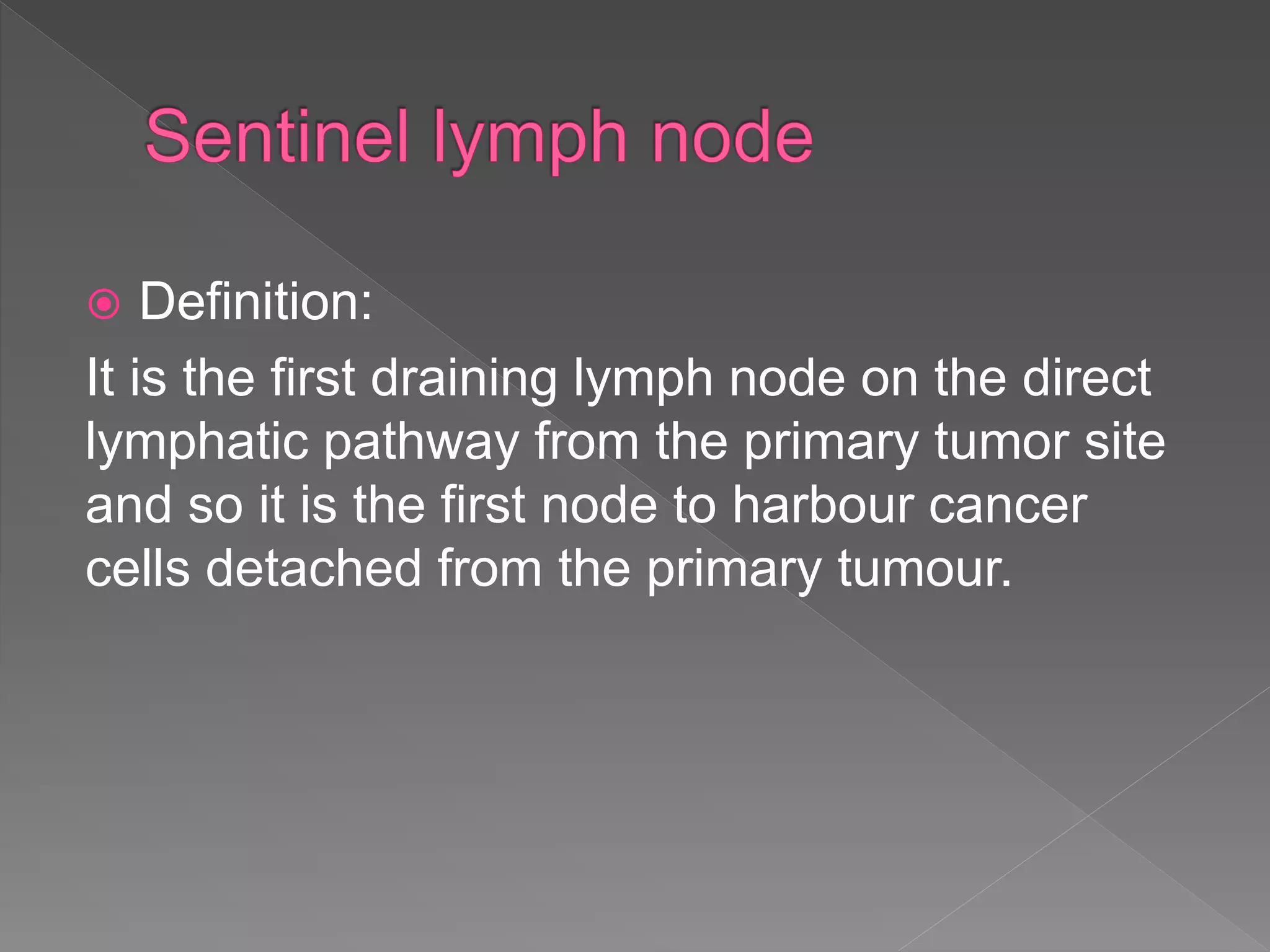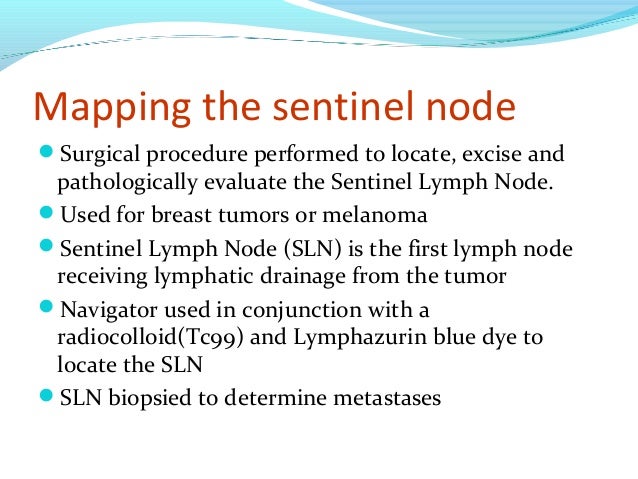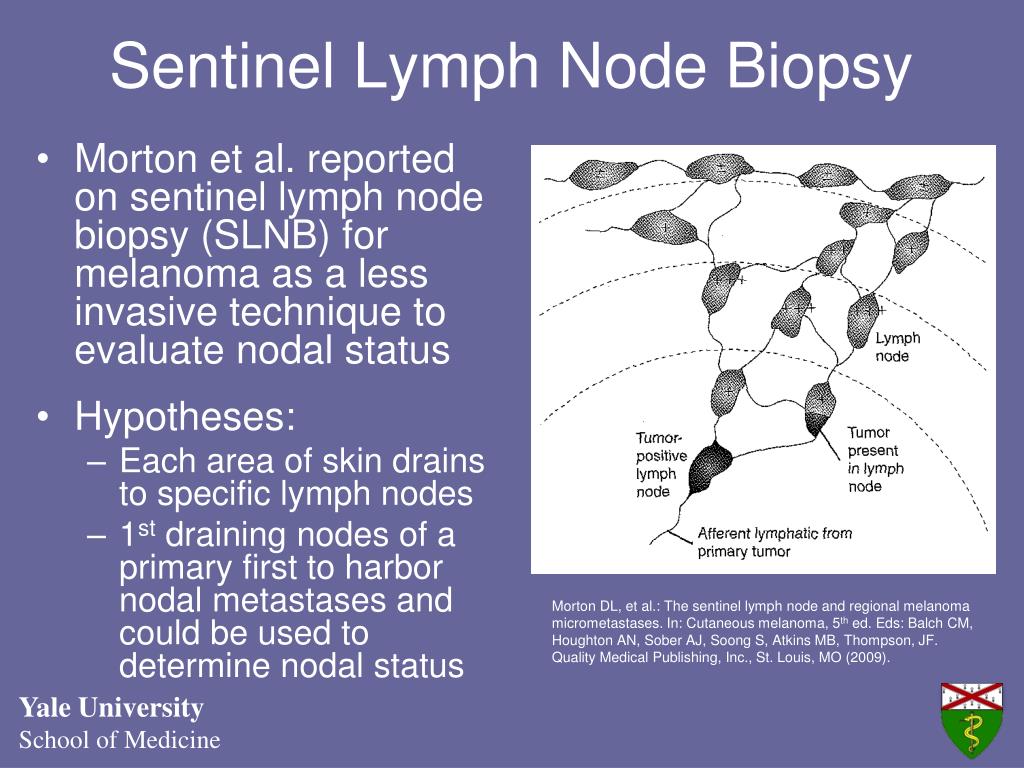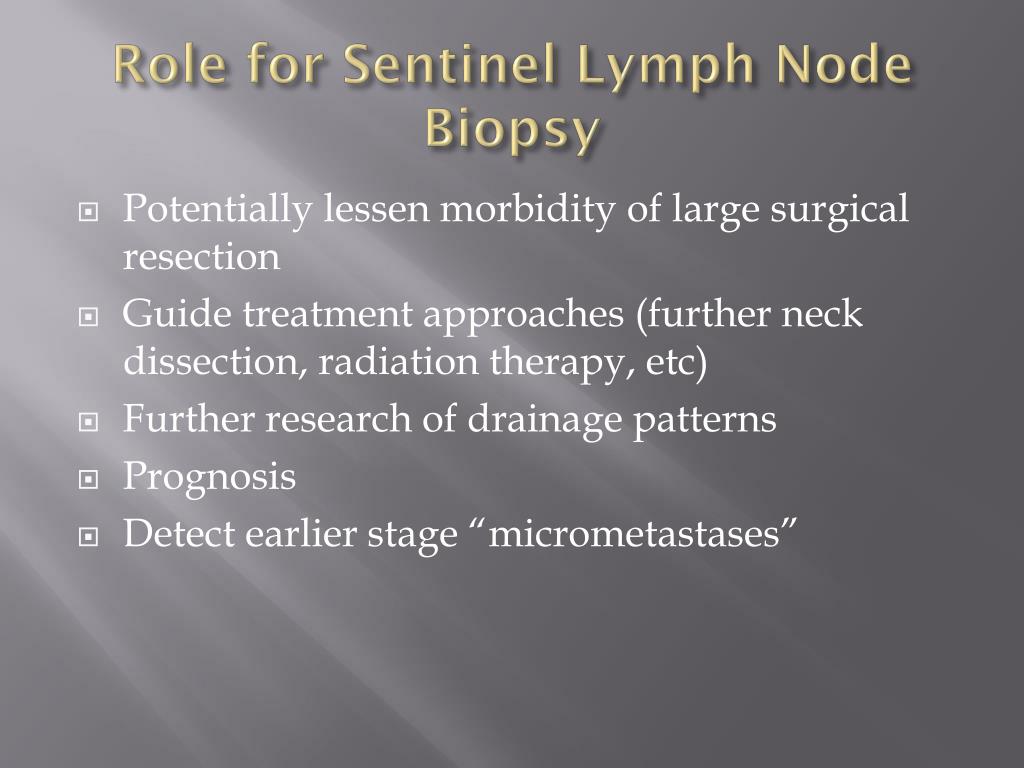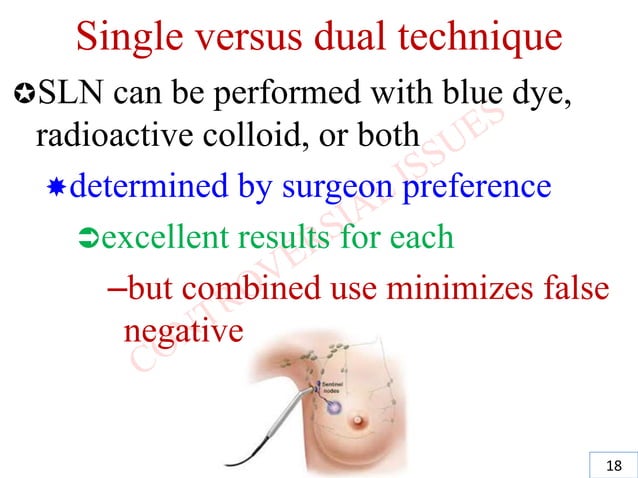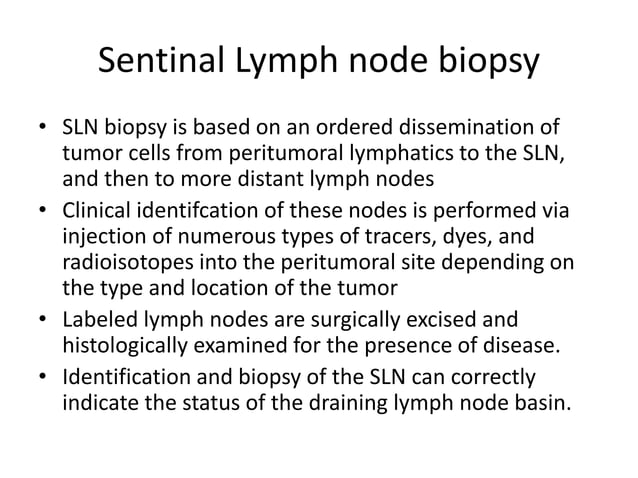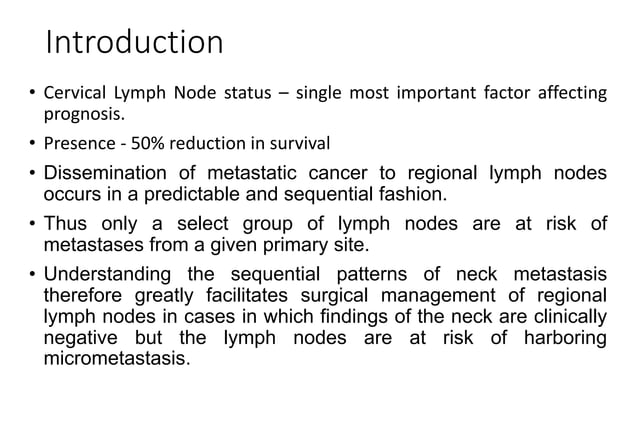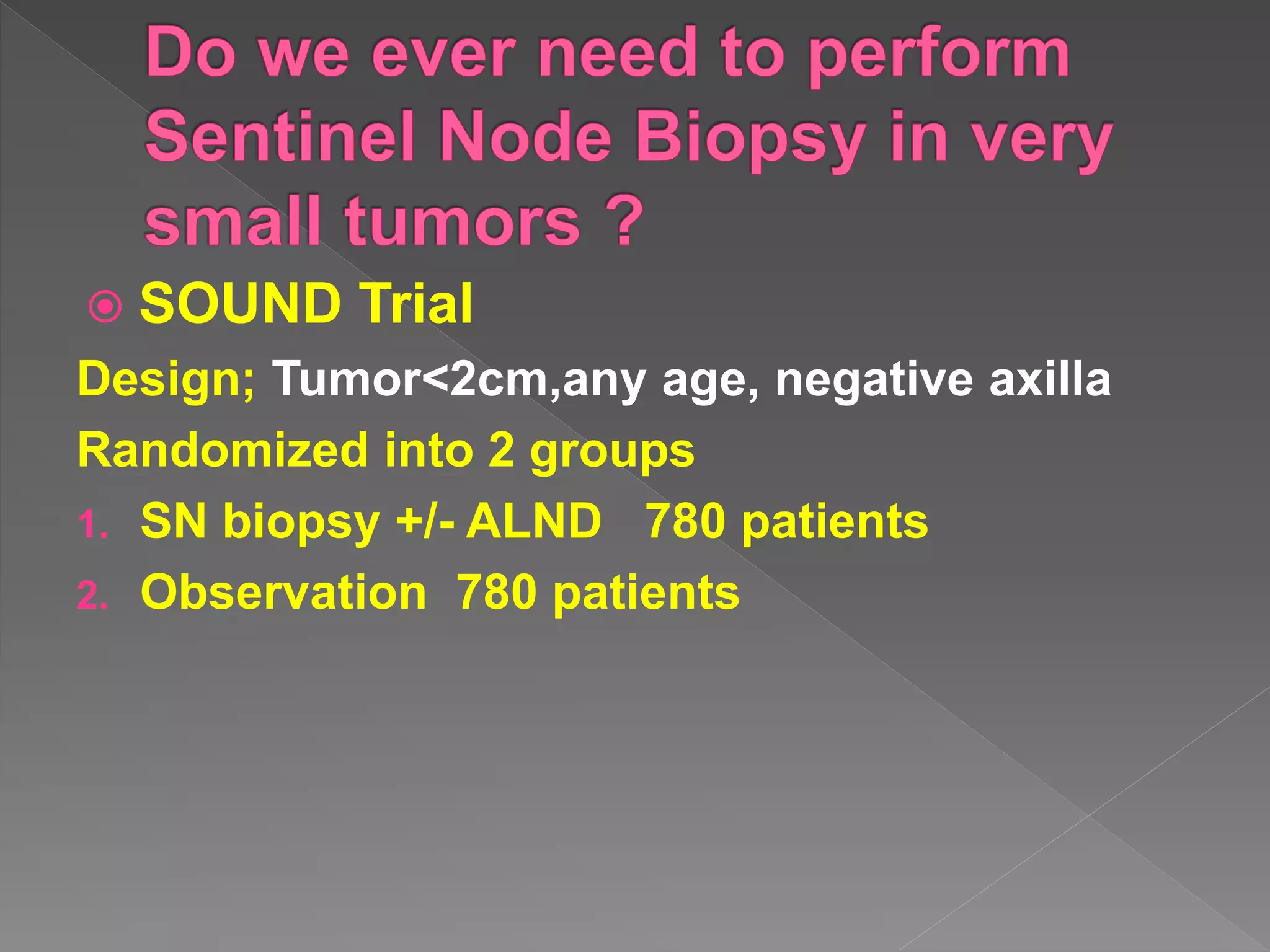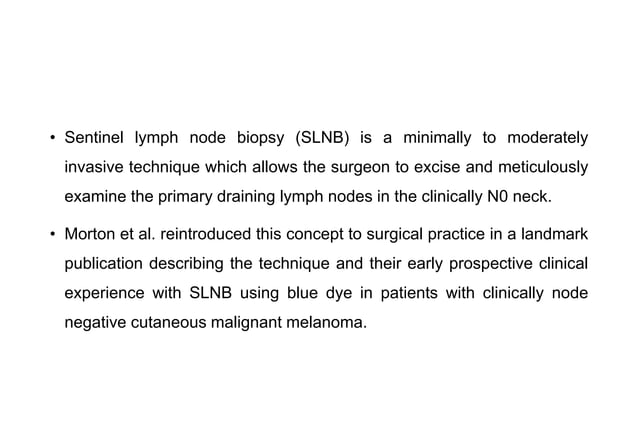Meaning Of Stratification For Sentinel Lymph Node Biopsies

Imagine a ray of sunshine filtering through the window of a bustling hospital waiting room. The air is thick with anticipation, anxiety, and hope. Families huddle together, murmuring words of encouragement. The unspoken question hangs heavy: "What does the future hold?" For many, the answer hinges on the findings of a small, yet pivotal procedure: the sentinel lymph node biopsy.
At its core, stratification in the context of sentinel lymph node biopsies (SLNB) is about risk assessment. It's the process of categorizing patients undergoing SLNB into different groups based on their likelihood of having further cancer spread, particularly in breast cancer and melanoma. This stratification helps guide treatment decisions, allowing doctors to tailor therapies to individual needs, minimizing unnecessary interventions while ensuring aggressive treatment for those at higher risk.
The Sentinel Lymph Node: A Critical First Responder
To understand stratification, it's crucial to first grasp the role of the sentinel lymph node. Think of it as the 'gatekeeper' or the first lymph node to which cancer cells are likely to spread from the primary tumor. It's the initial site where the body attempts to contain the cancer.
The concept of sentinel lymph node biopsy revolutionized cancer staging. Before its development, a more extensive axillary lymph node dissection (ALND) was the standard. ALND involved removing a large number of lymph nodes in the armpit, which often led to lymphedema and other complications.
SLNB offers a minimally invasive alternative. It involves identifying and removing only the sentinel lymph node(s). A pathologist then examines these nodes for cancer cells.
Why Stratify? Understanding the Levels of Risk
Not all positive sentinel lymph nodes are created equal. Some may contain only a few cancer cells (micrometastases), while others may be heavily infiltrated. This variability is where stratification comes into play.
Different factors contribute to a patient's risk profile. These factors are crucial for effective stratification and personalised treatment plans.
Key Factors in Stratification
The size of the metastasis is a primary factor. Micrometastases (smaller than 2mm) are generally considered lower risk than macrometastases (larger than 2mm). The number of involved sentinel lymph nodes also plays a significant role.
Extracapsular extension (ECE), where cancer cells have spread beyond the lymph node capsule, is another important factor. ECE is often associated with a higher risk of recurrence.
Other tumor characteristics, such as grade, hormone receptor status (in breast cancer), and the presence of lymphovascular invasion (LVI) in the primary tumor, are also considered. Patient-specific factors, like age and overall health, are also factored into risk assessment.
How Stratification Impacts Treatment Decisions
Stratification directly influences treatment recommendations. Patients with low-risk features might be spared more aggressive treatments like axillary lymph node dissection.
For example, some women with early-stage breast cancer and only micrometastases in the sentinel lymph node may be candidates for less extensive surgery and radiation therapy. This is a significant shift from the past, thanks to research demonstrating the safety of this approach for select patients.
Conversely, patients with high-risk features, such as macrometastases or extracapsular extension, may require more aggressive treatment. This might include completion axillary lymph node dissection, radiation therapy, and/or systemic therapies like chemotherapy or hormone therapy.
The Ongoing Evolution of Stratification: Moving Towards Personalization
The field of cancer treatment is constantly evolving. Researchers are continually seeking ways to refine risk stratification and personalize treatment plans even further.
One area of active investigation is the use of gene expression profiling. These tests analyze the activity of specific genes in tumor tissue, providing additional information about the tumor's behavior and its likelihood of spreading. Oncotype DX and MammaPrint are two commonly used gene expression assays in breast cancer.
Another promising avenue is the use of circulating tumor cells (CTCs) and circulating tumor DNA (ctDNA). These technologies allow doctors to detect cancer cells or DNA fragments in the bloodstream, potentially providing early warning signs of recurrence or metastasis. The use of artificial intelligence and machine learning to analyze vast datasets and identify new prognostic factors is also a growing field.
These advancements promise to further refine stratification and personalize treatment decisions, leading to better outcomes for patients.
The Emotional Landscape: Navigating Uncertainty and Hope
Undergoing a sentinel lymph node biopsy and learning about the results can be an emotionally challenging experience. It's a time of uncertainty, anxiety, and hope.
Understanding the concept of stratification can empower patients. Knowing how risk factors are assessed and how they influence treatment decisions can help individuals feel more informed and in control.
Open communication with the medical team is essential. Patients should feel comfortable asking questions and expressing their concerns.
Support groups and counseling services can also provide valuable emotional support during this time. Connecting with others who have gone through similar experiences can offer comfort and encouragement.
The journey through cancer treatment is rarely linear. There are ups and downs, moments of hope and moments of fear. But with advances in medical science and a supportive network of healthcare professionals, family, and friends, patients can navigate this journey with strength and resilience.
The Bigger Picture: Stratification as a Cornerstone of Precision Medicine
Stratification in sentinel lymph node biopsies is a prime example of precision medicine in action. It's about using individual characteristics to tailor treatment and improve outcomes. It exemplifies the shift towards a more personalized and targeted approach to cancer care.
As our understanding of cancer biology deepens, we can expect even more sophisticated stratification methods to emerge. These methods will allow us to identify patients who are most likely to benefit from specific therapies, while sparing others from unnecessary treatments and side effects.
The ultimate goal is to transform cancer from a life-threatening disease into a manageable condition. Stratification plays a critical role in achieving this goal, one node, one patient, one personalized treatment plan at a time. The continuous research and dedication of countless healthcare professionals offer a beacon of hope for a future where cancer is less feared and more effectively treated.
